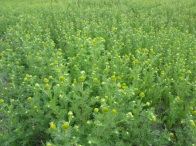The use of native plants as food and medicine is an important part of American Indian culture and lore. My grandma often gave talks about the traditional plants and their medicinal uses and shared stories that she learned about them. We would go for walks with her while she looked for various plants. Often she could find some of them by just taking one step out of the door.
So we are sending you on Indian Pipe scavenger hunt of plants commonly used by the Ojibwe. Take the time to get out and enjoy nature for soon the seasons will change again. Get your family and friends together for a hike and see how many you can find. Be active and learn a little something along the way!
Please note: We are not offering medical advice simply sharing the old remedies. See your own health care provider for any symptoms you may have.
Indian Pipe
While growing up, when my grandma would come and journey outside with us, the plant I always wanted to find was the Indian Pipe.
The Indian Pipe had many uses including:
- Using juice of plant mixed with water for eye drops
- Using dried plant for pain relief and to induce sleep
My grandma would always say that wherever you found an Indian Pipe, it meant that Wenabojoo had been traveling there too and dropped some tobacco.
Wintergreen
It is easy to find wintergreen. It grows close to the ground and rarely grows much higher than 6 inches. Wintergreen is used as a pain reliever and to soothe upset stomachs. Typically leaves are harvested in the fall and dried to make teas but wintergreen oil can also be used.
Wintergreen Tea
Collect green wintergreen leaves and boiled in a kettle for 10 minutes. Strain liquid. Add maple syrup or sugar to sweeten to taste. Serve!
Wild Chamomile
The wild chamomile is a bit different than what is commonly classified as chamomile. The common uses for the Ojibwe tribes were as a sleep aid and to reduce inflammation. For those in need, it was also thought to reduce flatulence…nature’s own Bean-O!
Common Plantain
Plantain is everywhere. You might not even notice it. I’m sure most lawns or roadsides have patches of this plant. The leaves are described as leathery and have thicker stalks. It was used as a poultice and applied to open wounds to prevent infection.
Yarrow
Yarrow has clusters of white flowers and bright green leaves. It typically blooms June through October and is found in many different places. The leaves were often used for headache remedies and to reduce bleeding. The flower is said to have been smoke for ceremonial purposes.
White Pine
You should have no trouble finding some pine trees in Northern Wisconsin! The Ojibwe boiled the needles in water to create a tea or syrup. It was used for coughs and colds as it was high in Vitamin C. Some tribes also used the sweet inner bark of the tree for similar reasons. White pine was used as a seasoning for meats such as venison.
Cattails
I love searching for cattails but tread carefully. They tend to be located in boggy, swampy areas and you might get a bit more contact with nature than you bargain for!
The chopped root has been mashed and used as an ointment for cuts and burns.
Several parts of this plant can be prepared and eaten in a variety of ways from cooking the shoots (early) like asparagus to cooking the starchy core of each sprout like a potato.







